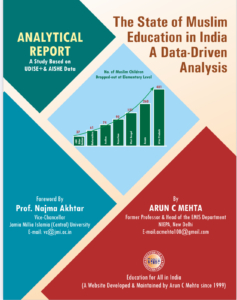Supreme Court Reconsiders 2014 Exemption of Minority Schools from RTE Act
A Step Toward Inclusive Education?
Introduction
On September 2, 2025, the Supreme Court of India cast doubts on its 2014 decision that exempted minority educational institutions from the Right to Education (RTE) Act, 2009. This ruling, from the Pramati Educational and Cultural Trust case, allowed religious and linguistic minority schools to bypass RTE mandates like teacher qualifications and free education for underprivileged students. Justices Dipankar Datta and Manmohan, hearing pleas from Tamil Nadu and Maharashtra about mandatory Teacher Eligibility Tests (TET) in minority schools, referred the issue to a larger bench, arguing that the exemption may undermine inclusive education. This article explores the exemption’s background, reasons, benefits for minority institutions, affected minority types, estimated institution numbers, and its broader implications.
Background of the Exemption
Enacted in 2009 under Article 21A, the RTE Act ensures free and compulsory education for children aged 6–14, mandating a 25% reservation for economically weaker sections (EWS) in private schools, infrastructure norms, and TET for teachers. However, Article 30(1) grants minorities the right to establish and manage schools to preserve their cultural identity, creating a legal tension.
In 2012, the Supreme Court’s ruling in Society for Unaided Private Schools of Rajasthan v. Union of India upheld the RTE but exempted unaided minority schools from the EWS quota. The 2014 Pramati ruling extended this, declaring the entire RTE Act inapplicable to all minority institutions to protect their autonomy. The 2025 referral questions this blanket exemption, citing its potential to fragment equitable education.
Why Were Minority Schools Exempted?
The 2014 exemption protected minority autonomy under Article 30(1). The Pramati bench argued that RTE provisions, like the EWS quota and teacher regulations, could force minority schools to admit non-minority students or adopt state curricula, diluting their cultural ethos. For example, the 25% quota was viewed as a reservation, from which minorities are exempt under Article 15(5); this allows schools to maintain community-focused admissions and avoid financial burdens from unreimbursed free seats.
However, the 2025 bench critiques this exemption for potentially reinforcing societal divides and enabling misuse, where some schools prioritize exclusivity over cultural preservation, prompting a reevaluation of its alignment with Article 21A’s universal education goals.
Benefits for Minority Institutions
The exemption offers minority schools significant advantages:
- Administrative Control: Freedom to design curricula reflecting religious or linguistic heritage without RTE constraints.
- Financial Autonomy: Avoiding the EWS quota eliminates revenue losses, enabling higher fees and tailored resource use.
- Admission Flexibility: Prioritizing community students preserves minority identity.
- Regulatory Ease: Exemption from TET and infrastructure norms reduces compliance burdens.
Yet, critics note that exemptions may isolate schools from national standards, limit diversity (some schools report only 8.7% minority students), and draw criticism for evading social responsibilities, particularly for elite Christian institutions.
Types of Exempted Minorities
Exemptions apply to institutions certified by the National Commission for Minority Educational Institutions (NCMEI), covering:
- Religious Minorities: Muslims, Christians, Sikhs, Jains, Buddhists, and Parsis (per the National Commission for Minorities Act, 1992).
- Linguistic Minorities: Groups with distinct mother tongues in a state, e.g., Tamil speakers in Maharashtra or Urdu speakers in non-Urdu regions.
Minority status requires NCMEI or state certification, with the Supreme Court emphasizing rigorous verification.
Number of Minority Institutions
As of July 2025, the NCMEI recognizes approximately 14,147 minority educational institutions, including schools and colleges, with Christian schools (due to missionary history) and Muslim institutions prominent. States like Kerala and Maharashtra have high numbers. Including state-recognized or uncertified institutions, the total may exceed 15,000, within India’s 52,000+ higher education institutions.
Implications and Future Outlook
The Supreme Court’s referral signals a potential shift toward balancing minority autonomy with RTE’s inclusivity goals. The bench’s concern – that exemptions weaken shared learning spaces—highlights issues like elite capture and limited EWS access. The larger bench will address four issues: TET applicability and the validity of the Pramati ruling. A nuanced decision could apply select RTE provisions without eroding minority rights, fostering equitable education.
Concluding Observations
The reconsideration of the 2014 RTE exemption for minority schools is a pivotal moment for India’s education system. While exemptions protect minority identity, they risk deepening educational divides. A balanced ruling could ensure cultural preservation alongside universal education, creating a more inclusive society. Stay tuned for the larger bench’s verdict, shaping India’s educational future.
Source: The Economic Times, September 2, 2025


